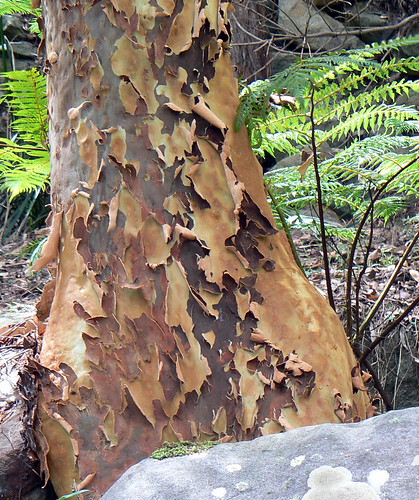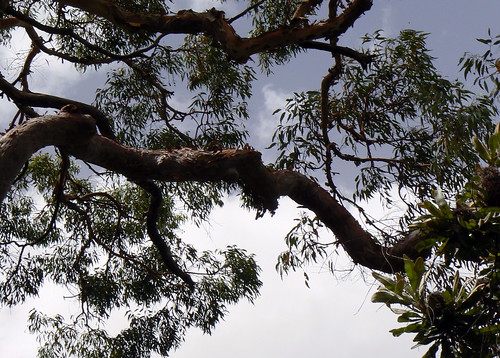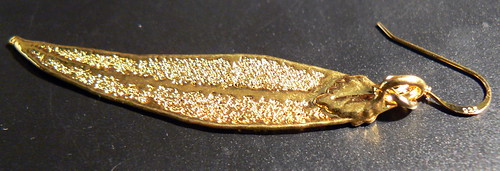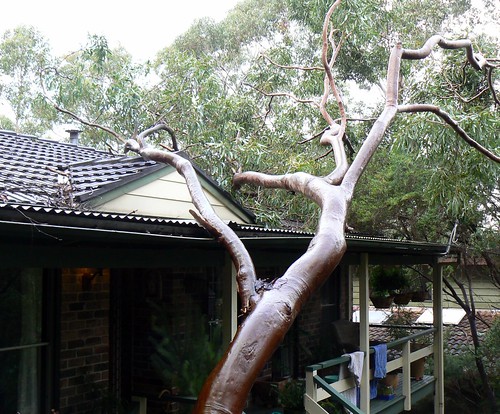
Angophora costata is found across a range of eastern coastal regions in Australia, and they are common in the sandstone soil of the Hawkesbury area. They are not of the genus Eucalyptus, but are closely related. One way to distinguish them is that Angophora leaves grow opposite each other on the stem, while in Eucalyptus species they alternate.

We have a few mature specimens in our garden, and they provide shade and habitat for a multitude of creatures. Their heavy limbs also have a tendency to shatter, alas. Just over two years ago, a large tree fell over on our house.


These are super terrific trees. My grandma taught me that they have 'open gum nuts' where as the ...other ones (Eucalyptuseseses)... have closed gum nuts like the snugglepot & cuddlepie kind. so there.
ReplyDeleteWhat is this limb shattering business? Niko and I (being into our recreational tree climbing - which is minimal impact with limb savers and lots of gentleness see:www.treeclimbingsga.org) climbed an Angophora on the weekend. Now that I know the limbs shatter, I'm imagining spontaneous combustion type thing, it seems we should reconsider.... It was a beautiful tree, the bark has just fallen and throughout the morning the grey patches turned mauve and then purple.... nothing to do with temperature...
Yay thanks so much. Helped me with my assignment. :)
ReplyDeleteI too adore these most beautiful trees having grown up amongst them in Sydney - in the 50s and 60s when life there was quieter.
ReplyDeleteI recently took my dad back and the entire hill I used to climb over (full of angophoras and associated vegetation) was covered in McMansions :(
Yes, as much as I love trees, I learned that you don't camp under them - and I don't think I could climb one now!